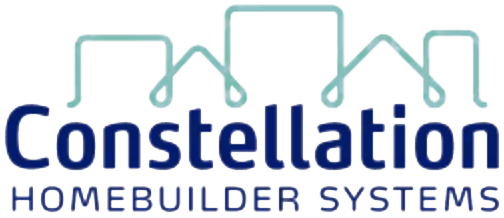Technology
An Industry First: A Common Data Model Ties Knowledge To Action
A Homebuilder Common Data Model would offer a data dictionary platform that could power builders with reporting, analytics, and dashboards, as well as benchmarks to compare their performance regionally.

A high-stakes scramble finds thousands of homebuilders of all sizes and stripes rushing en masse toward a single goal, each vying ferociously to discover and sustain a "strike price." A strike price, definitionally, enables them to overcome both mortgage qualification math and negative sentiment that are growing walls of worry as they try to sell and close new homes.
Prices, prices, and prices would appear to count as the first, second, and third most crucial forces in residential construction right now.
People like Paolo Benzan, who headed up information systems and technology for major national builders like Standard Pacific, CalAtlantic, The New Home Company, and William Lyon Homes, knows better.
With all the intense focus on resetting price switches and levers to "clear" standing inventory and keep the starts-to-sales-to-closings machines running, Benzan – who now serves as VP - Data Strategy for Constellation HomeBuilder Systems – knows only too well that a homebuilder's staying power is not simply a function of money coming in from sales as revenue.
To that end, Benzan and the team at Constellation this week announced it's field testing with a "couple of enterprise builders on contract" a technology-, data- and knowledge-powered platform designed to help homebuilders get better at buying what they buy to build homes even as they strive to improve selling them.
Per a press statement this week:
Constellation HomeBuilder Systems, North America's largest provider of homebuilding software and services, is set to reveal a new data platform that will allow builders to improve their operational insights while freeing up scarce data resources to add more value to their businesses.
With the Homebuilder Common Data Model, Constellation will be able to create a standardized set of industry metrics. By accessing the platform, homebuilders can then access highly valuable reporting, analytics, and dashboards, as well as benchmarks to compare their performance regionally. Many widely-used builder metrics, including backlogs, active selling communities, average sales price, net sales, and more, will be made available.
The platform is built to leverage Constellation's popular construction ERP systems including NEWSTAR, BuildTopia, and FAST and to provide value across the industry.

When it comes down to it, survival – and eventually the ability to flourish when market momentum returns as it inevitably will do – relies as much on a homebuilding organization's competence at spending money as it is at selling and booking revenue.
Being excellent at buying and managing resources -- goods, products, materials services, land, business solutions, and operational solutions -- has largely been a case of being as strong as the weakest link in a set of practices or systems in homebuilding up to the present moment. Among the countless single points of failure in an operational system are offline spreadsheets that reflect dated or conflicting data, disconnects on project mapping, and cost codes that don't match to current or future pricing.
We're working out the final, field-level mechanics of the platform with two homebuilders right now, hardening the platform, making sure we have bi-directional processes and servers that work, and that our mapping tables function in real time," Benzan says. "At this critical moment in the industry, the goal is to go-to-market Feb. 1 of 2023, and begin onboarding builders one by one so that we can get on a quick learning curve of how the Common Data Model adapts to each system. We believe we have 85% or more of the work done for every builder, and that we'll learn fast and adapt the system as we integrate more builders' own internal processes."
Benzan notes that benefits of a Common Data Model – which he describes as a data dictionary platform that recognizes the complicated and complex pieces and parts of what it takes to develop, procure, assemble, and complete every home across the end-to-end building lifecycle – start at the company level as a negotiation and decision-support tool, and as each firm adopts its use, ripples wider and wider.
At the micro level, teams can work with a real-time single-source-of-truth value and cost flow chart through each job type," says Benzan. "Further, teams can map through a standard set of cost codes tied to real-time fluctuations, which can impact particularly smaller companies that don't have sophisticated, data-mature, systems in place. For many smaller builders, 75% of this work is done manually. The Common Data Model will offer those companies immediate, decision-making capability they don't have right now."
Another part of the Common Data Model platform's appeal is goes to the issue of what a homebuilding company's core competency is, and what it expends time and money to do that's not in that core competency set.
The option to have Constellation house and host this data and analytics capability allows the skills and talent of leadership and management to focus more wholly on what it is they do best and drive the most value doing," Benzan says. "Data and analytics teams are expensive, and keeping them resourced is a full commitment and investment, so many builders may prefer that we serve as their solution."
As the Common Data Model penetrates the business community of homebuilders, a third benefit of the platform lies in a homebuilding firm's ability to benchmark performance, per square foot costs, skilled trade costs, construction cycle metrics, and other key performance indicators against an array of peers, based on geographical, marketplace, and other criteria.
As we aggregate this level of data at scale, the opportunity starts to migrate up in value to helping strategists at the company understand how to run their business," Benzan says. "Then, later in the year next year, when we've got enough of a swath of homebuilding companies onboarded and a robust data set, we can start offering predictive modeling, both a the job mapping level and costs – lumber futures, the commodities markets, etc."
What comes in in terms of revenue from sales of new homes only matters insofar as the amounts that go out in costs for resources finally become measurable, so that they can finally become manageable.
Right now, builders are reviewing their budgets and looking for opportunities to save money and leverage better data to do that in a sustainable way," says Chris Graham, President of Constellation HomeBuilder Systems. "With the Homebuilder Common Data Model, we are powering the industry to build smarter than ever at a time when its impact is needed most."
Constellation provides fully-integrated or standalone software solutions expertly engineered to manage the complete ecosystem of a homebuilder’s business functions and growth.
MORE IN Technology
Lennar Taps Into Geothermal To Power New Colorado Homes
A major homebuilder's bet on geothermal heating and cooling for over 1,500 new Colorado homes could pave the way for mainstream adoption as buyers increasingly seek sustainable, energy-saving features.
AI Crushes Missing-Middle Time And Cost Curves Toward Affordability
Developing multifamily rental and for-sale properties takes time — sometimes years -- depending on a labyrinth of zoning rules and the whims of local jurisdictions.
Brandon Elliott’s Next Big Thing: An Uber-Style Building Trades Platform
After selling Elliott Homes to Meritage, the Gulfport, Miss.-based entrepreneur sets his sights on transforming trades with a logistics-tech startup that aims to make construction faster, smarter, and more affordable—starting with siding.


